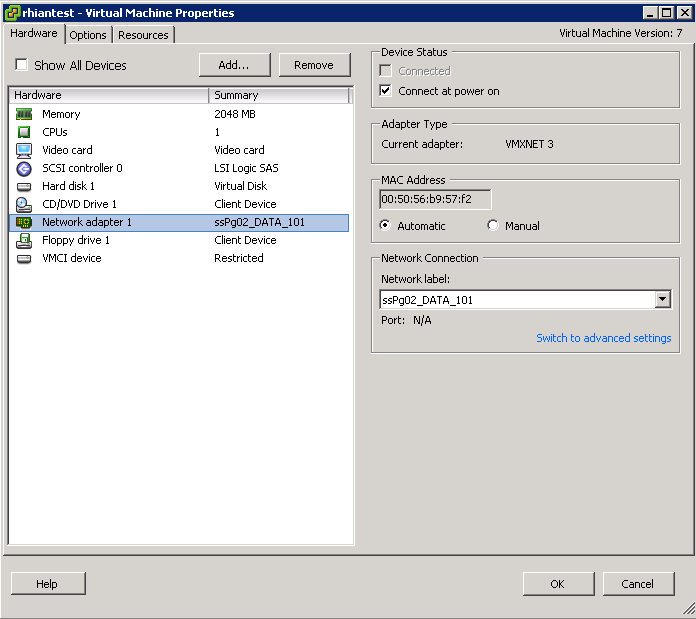Tuning Configuration
- Use the VMXNet3 adapter and if it is not supported use the VMXNET/VMXNET2 adapter
- Use a network adapter that supports TCP Checksum, TSO and Jumbo Frames multiqueue support (also known as Receive Side Scaling in Windows), IPv6 offloads, and MSI/MSI-X interrupt delivery
- Use the fastest ethernet you can. 10GB preferable
- Ensure the speed and duplex settings on the network adapters is correct. For 10/100 nics, set the speed and duplex. Make sure the duplex is set to full duplex
- For NICs, Gigabit Ethernet or higher set the speed and duplex to auto-negotiate
- DirectPath I/O (DPIO) provides a means of bypassing the vmkernel, giving a VM direct access to hardware devices by leveraging Intel VT-D and AMD-V hardware support. Specific to networking, DPIO allows a VM to connect directly to the hosts physical network adapter without the overhead associated with emulation or paravirtualization. The bandwidth increases associated with DPIO are nominal but the savings on CPU cycles can be substantial for busy workloads. There are quite a few restrictions when utilizing DPIO. For example, unless using Cisco UCS hardware, DPIO is not compatible with hot-add, FT, HA, DRS or snapshots.
- Use NIC Teaming where possible. VMware’s proprietry network teaming or Etherchannel
- Virtual Machine Communications Interface (VMCI) is a virtual device that promotes enhanced communication between a virtual machine and the host on which it resides, and between VMs running on the same host. VMCI provides a high-speed alternative to standard TCP/IP sockets. The VMCI SDK enables engineers to develop applications which take advantage of the VMCI infrastructure. With VMCI, VM application traffic (of VMs on the same host) bypasses the network layer, reducing communication overhead. With VMCI, it’s not uncommon for inter-VM traffic to exceed 10 GB/s




Leave a Reply